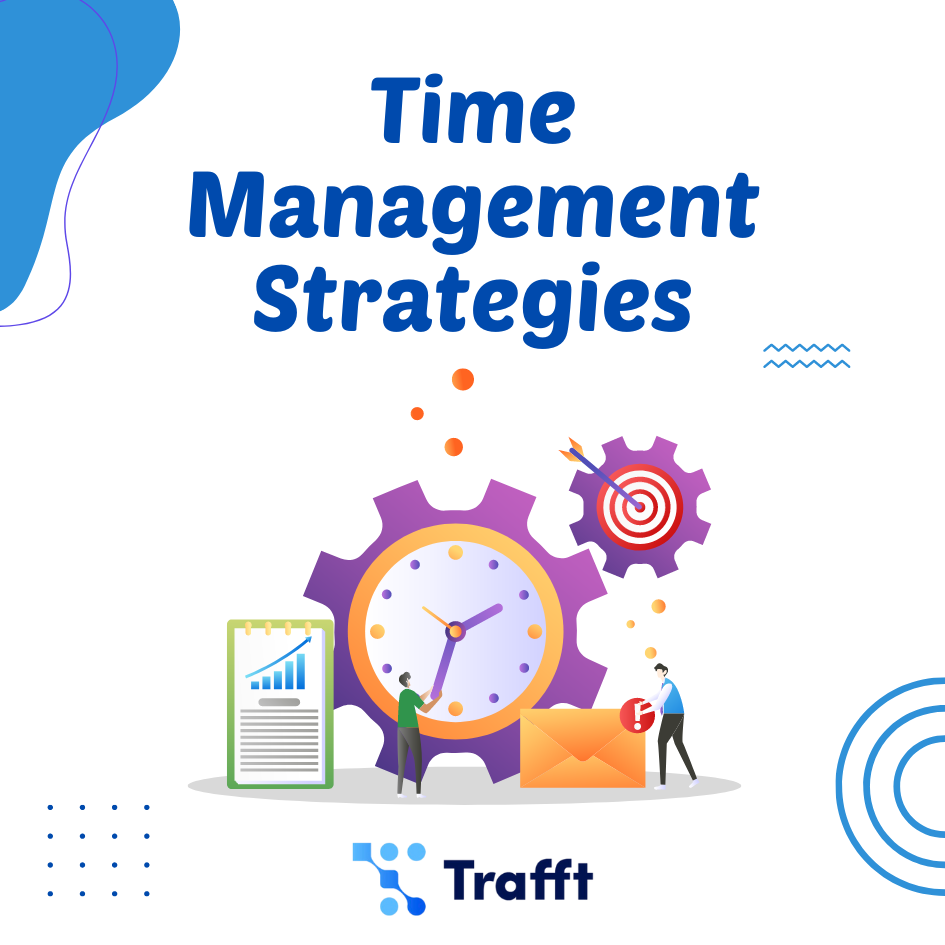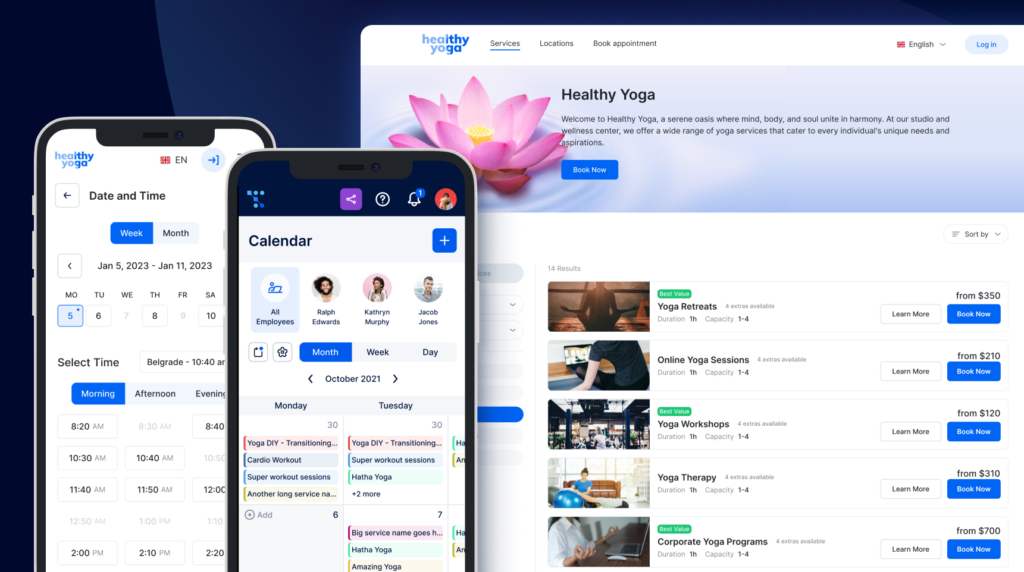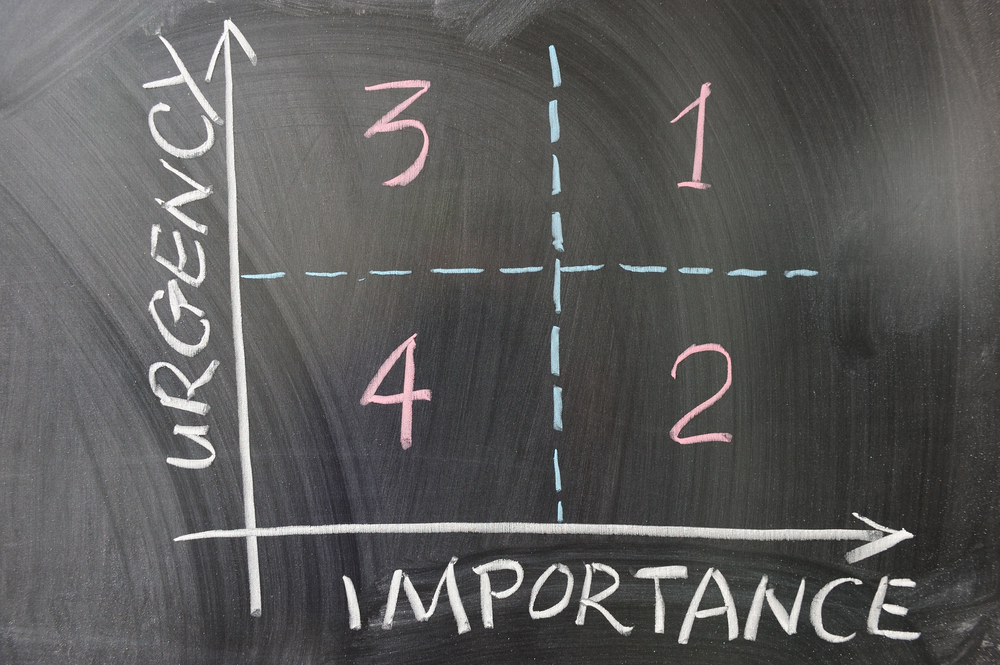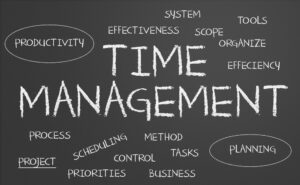As a manager, you are responsible not only for your own time but for the time of those working in your team. Time is the single most important resource at your disposal. Everyone gets the same amount of it in a day, and everyone has the ability to choose the best ways to use it. Because of this, time management strategies can be useful tools.
However, this phrasing can be misleading. Time cannot be managed. It is constant. The only thing that can be managed is what you do with it. The most effective managers and workers plan out their time to maximize productivity.
It can be difficult, however, to do this when there is so much that needs to be done in a day. From meetings to planning sessions to report writing, everything must fit into those 24 hours. This is where time management techniques are necessary.
Because of that, we’ve written about the 21 most effective time management strategies and techniques you can use to boost your efficiency and productivity. Let’s learn them!
What are Time Management Strategies?
Time management strategies are different techniques, practices, and approaches you can use to effectively plan, prioritize, and allocate your time to accomplish your tasks, projects, and goals. Time management techniques are specifically designed to help you make the most of your time, reduce procrastination, and enhance productivity in both your personal and professional life.
Effective time management involves different aspects, such as setting goals, and prioritizing, organizing schedules, optimizing work processes, and minimizing distractions. We’ll cover all effective time management strategies you can implement right away to boost your productivity.
The Importance of Effective Time Management Strategies

Working hard does not always equate to better productivity results. Sometimes, those that work the hardest are also the ones that waste the most amount of time. All the hard work in the world cannot make up for poor time management.
Implementing time management strategies simply means planning and focusing your efforts in a way that is conscious of both how much time is at your disposal, and how long a task will take to complete.
When you take these points into account and plan accordingly in a realistic way, then this will help optimize the hours in a working day to the greatest extent possible.
We have put together the 21 best time management techniques to improve your time management and help maximize your productivity.
Besides our tips below, you can also check out some tips from Thomas Frank who created this interesting video:
Once you implement these time management strategies, you’ll enjoy:
- Increased productivity
- Less stress
- Quicker decision-making
- Better quality of work
- Better work-life balance
- More free time
- Facilitated goal achievement
21 Most Effective Time Management Strategies & Techniques
1. Track time
Before adjusting your work patterns and taking action to improve time management, you must first take stock of your current situation.
Keeping a record or log of your daily work activities is a great way of doing this. This does not mean you have to keep detailed records of every minute of every day. Rather, start with 15-minute chunks of the day, and you will quickly start seeing patterns and habits that are wasting potentially useful time.
We've created an article with the best time-tracking apps that you should check out.
Here's a quick list of the ones that we included in that article:
- Toggl
- Hubstaff
- TimeCamp
- Timely
- Time Doctor
- Harvest
- Clockify
- Scoro
- RescueTime
- ... and a few more
You can check out the article to see detailed info about them.
2. Plan your day

Many people are put off making daily plans as they feel that there is little point - unpredictability is a fact of life, so why bother planning?
While this is true to a certain extent, plans can help add structure to your workday. This structure can - and indeed should - be flexible. This means that you can make sure you assign time to finish everything that needs doing, while also allowing for any variables, such as surprise meetings or tasks that take longer than expected.
3. Make use of effective scheduling
There are many ways you can manage the time in your day, from taking part in the Japanese technique of Kaizen to simply keeping a planner or using a planning app to maintain a schedule.
Scheduling feeds into the previous idea of planning your day but goes into more detail. While you may not want to schedule your entire day, scheduling individual tasks can make larger tasks easier to manage. Break these down into smaller, more manageable jobs and you will find these easier to accomplish.
It also gives you smaller goals to aim for, and at the same time allows you to feel that all-important sense of achievement more often, keeping you going and motivating you.
4. Do one thing at a time
Multitasking is often seen as something to aspire towards to maximize productivity. However, this is not always true. Multitasking when not prepared correctly can lead to increased stress and lower quality work.
Give yourself time to “warm up” to a task. Break a task into smaller chunks and tackle each one at a time. It may feel less time-effective at first, but you may find yourself finishing more work at a higher quality in the long run.
5. Order tasks from most important to least
Once you have broken your jobs up into smaller tasks, order them from the most important to the least important.
If at all possible, make sure you do the most important one first. If that is not possible, then do the biggest first. This means you are tackling the biggest challenge first, while at your highest level of energy and awareness.
Finishing a major task first can leave you with a sense of accomplishment that will propel you through the rest of the smaller tasks. It will feel like an easy downhill ride for the rest of the job!
6. Emphasize the most important activities
Again, this feeds into the previous point. When beginning a new project - and once you have split it up into manageable chunks - identify what will have the biggest positive impact on the overall project once completed. Then, focus on that one first. This will set you up for success from the very beginning, and create momentum.
To find out which is the most important task, ask yourself:
- What aspect of the project can’t we do without?
- What can I do immediately to get this done?
- What do most members of my team need from me now?
7. Stay on Top of Your Appointments with Trafft
You can now manage your business and grow your brand with a single, powerful software that keeps all of your appointments in line, your clients organized and your business booming.
Trafft is perfect for service businesses that need to streamline the booking experience both for their staff and their clients.
Trafft handles more than scheduling for you, even sending automated email or SMS reminders to your clients. No-shows? Not anymore!
With the insightful business dashboard, you can collect and analyze data and stay on top of your service business KPIs. The Trafft booking software adapts to different service industries for a blissful online booking experience and employee management.
Want to know more? Check out Trafft's awesome features to see what you are missing.
Sign up for Trafft - it’s free for up to 5 members, and you get amazing features to help you supercharge your productivity.
8. Know when you are at your most productive self
This may seem like an obvious point, but it is vital. You must figure out at what time of day you work best. Night? Early morning?
Once you’ve figured this out, you can schedule your day and plan your projects accordingly, so that you are tackling the most important work when you are at your sharpest.
9. Tailor your time
Time management involves many sweeping tasks, but it is important to tailor your time management strategies so it is specific to you. Don’t just apply every tip and rule you find directly to your life and expect it to work.
Something you can try doing is splitting your time into sections. These sections can be different depending on your work and life, but separating your work like this can help make the time you spend on tasks more manageable.
10. Group tasks
Once you have split your projects into tasks, try grouping them into batches of similar tasks. This is especially effective if you are working with a team of people.
This means you can separate your team into groups and hand off batches of similar tasks depending on the skills of each group of employees. This is the ultimate time-effective delegation.
Another way of doing this is by splitting your time into groups. Allocate batches of days for certain tasks and stick to them. This encourages teams to focus on particular tasks.
11. Block out time and build a framework for your day
Set out specific times of the day for specific tasks. This will help you focus your efforts on similar tasks so your attention is not jumping around all over the place.
- Begin with the tasks with the highest priority.
- Then, plan out how you will begin the day, and “exit” work for the day. This sets an endpoint for the working day - vital if you are working remotely.
- Set blocks of time for “proactive tasks”.
- Set blocks of time for “reactive tasks”. This includes reacting to feedback or solving problems.
12. Maximize full attention
The nature of being so connected in the modern world is that procrastination is rampant. We are constantly being flooded with calls, emails, questions, and more work. Creating boundaries and focusing on specifics is vital to working productively.
Make sure you are only ever doing one thing at a time. This means not working on a proposal while also typing out an email in another window. One thing at a time! Keep both your physical and digital workspace organized. To maintain focus and productivity, it’s essential to manage clutter, including your inbox. Tools like Clean Email can help you achieve an inbox-zero strategy by filtering out redundant messages, unsubscribing from unnecessary newsletters, and prioritizing important communications, creating space for meaningful work.
13. Delegation is king
No one can work in a vacuum. If you have colleagues available, use them!
No one will be impressed if you take too much work and refuse help in an effort to seem super-productive and capable. No one is an island. Delegation shows efficiency, leadership, and a focus on productivity. And it’s a great time management technique! If you’re a manager and one of your tasks is staff scheduling, make sure to delegate more work and equally share responsibilities among team members.
14. Enforce deadlines
Any experienced worker can attest to this: without a deadline, nothing gets finished. This may be an exaggeration, but it’s certainly true that not as much gets done if you have no deadlines to stick to.
So, set regular deadlines, and don’t just stick to them, enforce them - even on yourself! Nothing is more motivating than a ticking clock.
15. Learn to say “No”
It’s easy to take on more tasks than you can manage in an effort to please or seem capable. Yet, you will be helping no one if you cannot finish everything on time. Learn how much you can do in a set amount of time and be realistic about what tasks you accept.
If you are already working on something and think the quality of your work will suffer if you take more on, then it’s always OK to say “no”. People respect someone who knows their limits.
16. Eliminate distractions

As important as it is to complete certain tasks, it’s also vital to eliminate distractions. The first thing you need to do is to identify them, and then minimize interruptions that hinder your focus and productivity. Turn off unnecessary notifications, create a dedicated workspace, set specific times for emails and social media, and use apps that limit your access to distracting websites.
Reducing distractions allows you to maintain better focus and complete tasks in a shorter time frame.
17. Pomodoro time management technique
The Pomodoro is a widely-known time management technique that involves working in focused intervals that typically last 25 minutes. Once you do that, it’s time for a 5-minute break. After completing four “Pomodoros”, it’s time for a longer break of 15-30 minutes.
The Pomodoro time management strategy will help you stay focused, productive, and relaxed and avoid long breaks and procrastination.
18. Time management matrix
The time management matrix is a great strategy that groups your tasks based on urgency and importance. It consists of a four-quadrant system that helps you categorize your tasks.
Tasks are categorized into four categories: urgent and important (do these immediately), important but not urgent (schedule these), urgent but not important (delegate), and neither urgent nor important (either remove them or do them last).
The time management matrix clarifies priorities and helps you to invest your time and effort into things that matter.
19. The 2-minute rule
If you can complete a task in two minutes or less - do it immediately! Don’t add it to your to-do list, and don’t procrastinate. Or you can add it to your to-do list, and complete it immediately to gain that satisfaction.
The 2-minute time management technique prevents small tasks from accumulating and becoming overwhelming. It clears minor to-dos quickly, leaving you with more mental space to tackle bigger tasks.
20. Regular breaks
Regular breaks are vital because taking short scheduled pauses during work or buffer time between appointments will boost your productivity. These breaks can last anything from a few minutes up to half an hour.
If you take regular breaks, this time management technique will help you recharge, regain focus, and improve your energy. You’ll have less chance to experience burnout and increase your overall productivity. The Pomodoro time management technique we’ve mentioned is a structured way to implement regular breaks into your schedule.
21. Eating the frog
Eating the frog is a great metaphor and an even greater time management technique. It explains the importance of tackling your most challenging or important task first thing in the morning. The “frog” represents that one task you’re likely to procrastinate on. This time management strategy works because once you complete your most demanding task early, you gain a sense of accomplishment and motivation for the rest of the day.
As a bonus, it also prevents procrastination!
FAQs about Time Management Strategies
1. What are the most effective time management strategies for improving productivity?
The Pomodoro Technique, which divides work into 25-minute blocks with 5-minute pauses in between, is one of the best time management techniques for increasing productivity. Prioritizing tasks according to their relevance and urgency and concentrating on finishing the most important tasks first are two additional excellent strategies.
2. How can I prioritize my tasks and avoid wasting time on unimportant activities?
Start by determining which tasks are most crucial and urgent, and give them the greatest priority possible. Finally, classify tasks according to their priority and urgency using a technique like the Eisenhower Matrix. You may stop wasting time on pointless tasks by establishing specific goals, making a to-do list, and avoiding distractions.
3. What are some tips for staying focused and avoiding distractions while working?
Try utilizing noise-canceling headphones or looking for a quiet area to work in order to maintain focus and keep away from interruptions while working. Keep your phone and social media notifications away from any potential distractions. Use a timer to help you stay on track and to help you divide up your workday into shorter segments with frequent breaks.
4. How can I balance my personal and professional responsibilities effectively?
Setting boundaries and prioritizing your time are necessary for juggling personal and professional obligations. Finding time in your calendar for your most essential personal and professional goals is crucial. To help free up your time, think about outsourcing or delegating activities that are not as important.
5. What are some tools or technologies that can help me manage my time more efficiently?
Time-tracking apps like RescueTime, productivity apps like Trello and Asana for project management, and calendar apps like Google Calendar are some examples of tools and technology that can aid with time management.
6. How do I set realistic goals and deadlines for myself and stick to them?
Start by dividing your major ambitions into smaller, more manageable chores in order to establish realistic goals and timeframes. Set objectives and deadlines using the SMART (specific, measurable, achievable, relevant, and time-bound) criteria, and be honest about how long it will take to finish each activity. Establishing regular check-ins and assessing your progress will help you hold yourself accountable.
7. How can I overcome procrastination and manage my time more effectively?
Break things into smaller, more achievable steps to prevent procrastination and establish quick deadlines to instill a sense of urgency. Talk to yourself positively and give yourself praise as you do things. Use a timer to help you stay focused and prioritize your chores according to their relevance.
8. What are some effective time management techniques for students?
A calendar that takes into account classes, studying, and extracurricular activities should be made. Large undertakings should be divided into smaller, more manageable ones, and regular breaks should be taken to prevent burnout.
9. How can I schedule my day to make the most of my time?
Finding your most crucial activities and arranging them for when you are most productive will help you plan your day successfully. To keep track of things and rank them in order of importance, use a to-do list. To prevent burnout, make sure to schedule time for breaks and relaxation.
10. What are some time management strategies for managing a busy work schedule and maintaining a work-life balance?
Delegating duties when it is feasible, using time-tracking and productivity applications, and establishing boundaries between work and personal life are all examples of effective time management techniques for handling a busy work schedule and maintaining work-life balance. Maintaining a healthy work-life balance can also be achieved by prioritizing self-care and finding time for leisure activities.
Time Management Strategies: the Techniques Are There For You
In a world of increasingly independent and remote work, being able to manage your own time is more important than ever.
If you employ any number of these time management tips in your day to day life, you will soon notice an improvement in everything from productivity and focus, to stress and self-control. Being a quality worker starts with yourself. With these techniques, you will be well on your way to taking more control over your working life.
If you enjoyed reading this article about time management strategies, you should read about why time management is important.
We also wrote about a few related subjects like time management systems, the time management matrix, time management courses, time management quotes, techniques, and time management statistics.
Do you want an app for that? We also selected the best time management apps, but also free time management apps for tight budgets, and if you're looking for a time tracking app, we picked the best of them.
Needless to say, we are really into time management and we don't like to waste time because we know how poor time management can affect us.







